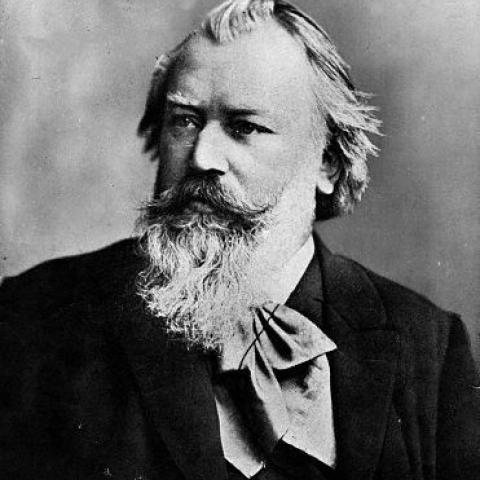Wayne T. Moore is professor emeritus at Auburn University, Auburn, Alabama. He received his undergraduate degree at Elon College, North Carolina, and studied organ with Fletcher Moore, Ernest White, and Warren Hutton. He earned his master’s degree and Ed.D. in music education from Teachers College, Columbia University, where he also studied piano with Thomas Richner.

In 1854, Richard Pohl, editor of the Neue Zeitschrift für Musik, reported hearing Franz Liszt in Weimar, Germany, play a combination piano-harmonium, a newly developed instrument built to Liszt’s specifications. In September of that year Liszt wrote to Bernhard Cossmann, the first cellist in the Weimar orchestra: “My monster instrument with three keyboards arrived about a fortnight ago and seems to be a great success.” Apparently, the instrument was never heard in concert until 150 years later when Joris Verdin, the Belgian harmonium virtuoso, presented a concert in Vienna on the same newly restored instrument.
The three-manual piano-harmonium is described in detail in “Liszt’s Monster Instrument: the Piano-Harmonium” (The Diapason, August 1970, pp. 14-15) by the present author. The instrument, weighing 3,000 pounds, resembles the shape of a concert grand piano. The piano keyboard is the top manual and contains seven octaves. Located below that, in stairstep fashion, are two harmonium manuals, each having a range of five octaves. The original bench and pedalboard of twenty notes, C-g, were apparently missing in 1912 and have not been reconstructed. There are sixteen stops, four of which are assigned for the use of the piano keyboard. Two large pedals to pump the bellows for the harmonium are placed to the left and right of two piano pedals. Two vertical levers placed between the knees and pressed together sustain tones of the lower harmonium manual. A slightly different sustaining device that pertains to the piano is operated by two horizontal knee levers. When a piano reed stop is drawn and the horizontal levers are raised, a piano note or chord will also sound in the reed. It will continue sounding until the levers are cleared, even though the notes may have long since been released and the piano sound may have faded away. A lever placed in the left side wall enables a second person to pump the bellows when the player is using the organ or piano pedals.
Early in 2004, in a publication of the Vienna Gesellschaft der Musikfreunde (Society of the Friends of Music), Otto Biba wrote: “After Liszt’s death in 1886, Princess Caroline of Sayn-Wittgenstein administered his estate. In 1887, her daughter Marie, married to the Prince of Hohenlohe, gave the piano-harmonium to the Gesellschaft der Musikfreunde in Vienna to include in its collection.” In 1938, the entire collection of instruments of the Gesellschaft was seized by Nazi authorities. After World War II, when it was placed on exhibit in the Vienna Museum of Art History, the instrument was not in playable condition. Many stop knobs were missing, the mahogany case needed to be refinished and the interior mechanism needed repair.
In 1994, it was decided by the Gesellschaft to restore the instrument with the financial aid of an anonymous donor. The ten-year restoration was entrusted to Patrick Collon of the Manufacture d’orgues de Bruxelles, Belgium. After the restoration was completed, Mr. Collon stated:
Although it is a difficult and complicated instrument, the restoration has been a great experience . . . it is slightly disappointing to realize that this instrument had little or no influence on Liszt, or indeed on anyone. I think that the main reason was that it rapidly became unplayable, and Liszt lost his initial enthusiasm. For correcting even the smallest hitch the piano had to be lifted off, an almost impossible operation. We have solved this problem by putting the whole instrument on a steel platform, with three discreet pistons inside, which can effortlessly raise up the piano. Purists may scream and yell, but it was the only possible solution to an otherwise insoluble problem.
Joris Verdin presented the first recital on the restored instrument in the Vienna Musikverein on April 15, 2004. He included on the program two compositions that Liszt had played for Richard Pohl in 1854: “Ave Maria” by Arcadelt and Liszt’s adaptation of the “Dance of the Sylphs” from The Damnation of Faust by Berlioz. A review in Die Presse had the headline, “A Synthesizer without Electric Power . . .” An article in the Musikverein magazine stated: “Anyone listening to the instrument will understand Liszt’s fascination with it: His music sounds ‘more modern’ by decades, as Liszt’s extremely progressive harmonies in this previously unknown sound combination produce musical colors that we might have attributed to Debussy. We thus get to know an entirely new Liszt and also works by other composers for whom this instrument provides authentic options of interpretation.” Perhaps the reviewer refers particularly to the effects of the knee levers, the most innovative feature of the instrument.
Dr. Hanns Hermann Bühler, my friend, translator and correspondent, attended the Verdin concert and says, “As to the instrument, it looked beautiful, newly polished and perfectly played by Joris Verdin. I would say, however, that its sound is that of an instrument to be played in a music parlor rather than a concert hall. Maybe the acoustics in the hall were not too good . . . but then it stands to reason that the piano part of the instrument on top of the harmonium cannot have the resonance of a regular concert grand.”
While the instrument failed to live up to Liszt’s expectation, it is an interesting experiment and it is to be hoped, now that the instrument has been restored and improved, it will not remain silent for another 150 years.



